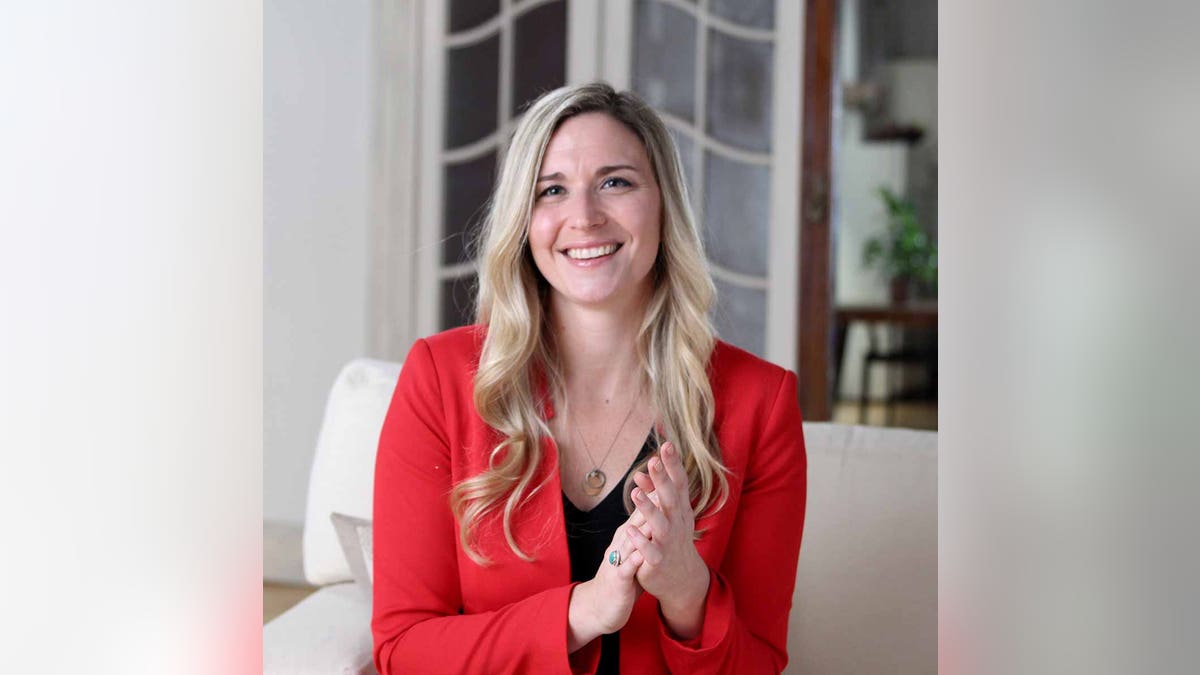
Lizzie Post of the Emily Post Institute is an expert in brunch etiquette.
By definition, brunch is a casual midday meal shared among friends — but that doesn’t mean you should throw all decorum to the wind.
Etiquette expert Lizzie Post is a big fan of brunch, but she’s an even bigger fan of good manners. As the great-granddaughter of governess-turned-renowned etiquette author Emily Post and the co-host of the “Awesome Etiquette” podcast, Post is the modern authority on proper brunch behavior. And while she acknowledges that brunch is probably the most casual meal you can eat, she reminds us that we should always be mindful of our manners.
To learn more about Post's latest work with Bob Evans and their new all-day brunch menu, Fox News spoke with Post to find out what we’re doing right — but more importantly, what we’re doing wrong — at brunchtime.
Here’s what she had to say:
Fox News: Brunch is kind of a casual meal; should we really be concerned about etiquette?
Emily Post: Brunch has always been, since the 1960s, a casual affair. It kind of had this moment where all of a sudden, brunch became thought of as avant-garde foods, and bellinis, and mimosas, and expensive drinks, and things like that. But really, it has always been a casual, easy-going. Our 1950s book actually says that brunch should be so casual that you could offer the invitation late at night, at the end of a party, for the next morning. And that, back in the day, would’ve been the epitome of the casual invite.
But we should always be concerned about etiquette … Etiquette is definitely a part of a casual culture. Whenever two people come together, and their behavior affects one other, you have etiquette.
What time should brunch generally be served?
There is no proper time. People traditionally think of it as being a late morning, early afternoon meal. But it doesn’t have to be. And one of the things I love about the Bob Evans brunch menu is that they’re doing it as an all-day service. So what I like about that is that it’s inclusive.
You know, not everybody works a standard Monday through Friday 9-to-5. A lot of people, their weekend might be Monday and Tuesday. Or their shift might finish at midnight. And I like the fact that this makes brunch acceptable to everyone. It’s a very inclusive rollout of a menu. An agenda.
STARBUCKS IS TESTING WEEKEND BRUNCH AT SELECT LOCATIONS
Is there anything that’s inappropriate to serve at brunch? What isn’t a brunch food?
I think the key with a brunch menu is variety. Typically, brunch tends to be a late-morning meal, so you’ve got some people who have been up for a few hours, they’re ready for that savory, lunchtime meal. Others, it’s still early for them. They want something light, or they want something sweet. I think that having a variety offers a degree not just between savory and sweet, but fresh and homestyle comfort food. I think that hits everybody. Even I could justify steak at noon.
If I were serving brunch, I think I would probably do something like a quiche or an egg strata, because that’s a good way to get eggs and vegetables and cheese into the same dish.
What are your thoughts on people who order a dish, but assume they’ll also be tasting everyone else’s?
Some people think it’s gross, and other people think it’s great …I would pose it to the table when I sit down, and say, ‘Hey, what’s everybody thinking?’ as we’re looking at the menu. “Do we want to do family-style, and order a bunch of dishes for everybody, or do we want to do individual plates?” Or sometimes, it’s not worth doing individual plates, but you kind of ask someone ahead of time, “Hey, would you be willing to give me a bite of that?” and they can let you know whether or not they’re comfortable with that.
Beyond that, I think it’s OK to share. But I do think how you share makes a big difference as to whether or not it’s gross to someone. If I just take my fork and reach across the table, and take a bite off your plate, that fork’s been in my mouth, and your stuff on your plate has been in your mouth, and we really are swapping germs.
But asking the server for a serving utensil —a large spoon or an extra fork — to be able to move that portion onto a side plate or onto the other person’s plate, would be the more appropriate way to go. If someone just starts reaching across, you can defend it by saying, ‘Oh, here. Pass me your bread plate and I’ll scoop you off a portion.” That’s your way of putting the boundary up politely without putting off the other person.
What’s the proper etiquette for boozing at brunch?
If you choose to drink, you may. And if you don’t wish to, you don’t have to. I would say that I’m a big fan of encouraging hosts — and I would encourage restaurants to do this too, actually — to offer non-alcoholic versions of the mixed drinks that are more daytime drinks.
Now, a non-alcoholic mimosa is just orange juice, but you could certainly do it more as a spritzer, you could add some other flavors to it to jazz it up a little bit. But I think it’s nice if they offer the option. Some people don’t drink for religious views, other people it’s personal preference. I spent two and a half years not drinking and I was really grateful when people would offer items that were interesting non-alcoholic beverages.
FOLLOW US ON FACEBOOK FOR MORE FOX LIFESTYLE NEWS
When hosting brunch, what’s the proper way to get everyone to leave?
Typically, as the meal slows down, obviously people are going to think, ‘We’ve eaten our food, we’ve had our fill, we’ve had some conversation, it’s probably time to go.’
If that’s not happening, as a host, you want to start doing things like putting away any buffet foods you’ve set out. At an evening party, you would turn down the music and turn up the lights. You might do things like start cleaning up a little bit. You don’t want to completely take the focus off your guests, or look like you’re being rude or dismissive towards them, but you do want to show that things are wrapping up.
How should we handle payment? It gets awkward when not everybody orders the same thing.
I think that keeping an eye on who’s ordered what makes a big difference. We just had a question on our podcast about a woman who went to dinner and watched as two of the other women ordered very expensive wine, while two of the other [guests] were underage. And then, the women who had ordered the expensive wine just said “Let’s just split the check five ways.”
I think it’s really important to be paying attention. And if no one’s speaking up for the other people at the table, just say, “Hey, you know what? It really looks like we ordered very different things. Why don’t we each take care of our own check?” You can either do that by having separate checks, or you can do that by looking at the bill, picking out what you ordered, and then doing the 1.3 rule. It’s a basic guideline — you do want to double-check your math to make sure you’re covering both tax and tip — but if you multiply the total of what you personally ordered by 1.3, you’ll usually come out fairly close to paying [what you owe].
One last thing: Are we allowed to put our elbows on the table?
At Emily Post, there’s no ban on elbows. We say that as long as you look awake and engaged in conversation, you’re good. If you’re leaning forward and your elbows are resting on the table, I don’t think that’s a problem at all. Now, if you’re leaning forward and you’ve got your elbows on the table, and you’ve got your chin resting on your hand because you’re so tired that you can’t stay awake … that’s going to be a problem.

